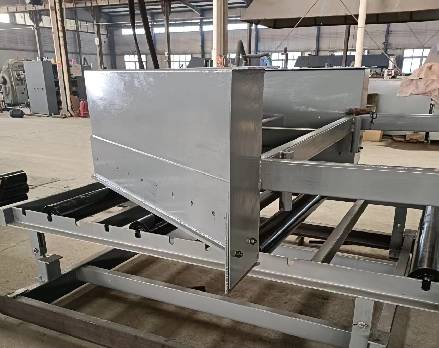 Afrikaans
Afrikaans  Albanian
Albanian  Amharic
Amharic  Arabic
Arabic  Armenian
Armenian  Azerbaijani
Azerbaijani  Basque
Basque  Belarusian
Belarusian  Bengali
Bengali  Bosnian
Bosnian  Bulgarian
Bulgarian  Catalan
Catalan  Cebuano
Cebuano  Corsican
Corsican  Croatian
Croatian  Czech
Czech  Danish
Danish  Dutch
Dutch  English
English  Esperanto
Esperanto  Estonian
Estonian  Finnish
Finnish  French
French  Frisian
Frisian  Galician
Galician  Georgian
Georgian  German
German  Greek
Greek  Gujarati
Gujarati  Haitian Creole
Haitian Creole  hausa
hausa  hawaiian
hawaiian  Hebrew
Hebrew  Hindi
Hindi  Miao
Miao  Hungarian
Hungarian  Icelandic
Icelandic  igbo
igbo  Indonesian
Indonesian  irish
irish  Italian
Italian  Japanese
Japanese  Javanese
Javanese  Kannada
Kannada  kazakh
kazakh  Khmer
Khmer  Rwandese
Rwandese  Korean
Korean  Kurdish
Kurdish  Kyrgyz
Kyrgyz  Lao
Lao  Latin
Latin  Latvian
Latvian  Lithuanian
Lithuanian  Luxembourgish
Luxembourgish  Macedonian
Macedonian  Malgashi
Malgashi  Malay
Malay  Malayalam
Malayalam  Maltese
Maltese  Maori
Maori  Marathi
Marathi  Mongolian
Mongolian  Myanmar
Myanmar  Nepali
Nepali  Norwegian
Norwegian  Norwegian
Norwegian  Occitan
Occitan  Pashto
Pashto  Persian
Persian  Polish
Polish  Portuguese
Portuguese  Punjabi
Punjabi  Romanian
Romanian  Russian
Russian  Samoan
Samoan  Scottish Gaelic
Scottish Gaelic  Serbian
Serbian  Sesotho
Sesotho  Shona
Shona  Sindhi
Sindhi  Sinhala
Sinhala  Slovak
Slovak  Slovenian
Slovenian  Somali
Somali  Spanish
Spanish  Sundanese
Sundanese  Swahili
Swahili  Swedish
Swedish  Tagalog
Tagalog  Tajik
Tajik  Tamil
Tamil  Tatar
Tatar  Telugu
Telugu  Thai
Thai  Turkish
Turkish  Turkmen
Turkmen  Ukrainian
Ukrainian  Urdu
Urdu  Uighur
Uighur  Uzbek
Uzbek  Vietnamese
Vietnamese  Welsh
Welsh  Bantu
Bantu  Yiddish
Yiddish  Yoruba
Yoruba  Zulu
Zulu Effective Solutions for Maintaining and Optimizing Scraper Belt Cleaners in Industry
Understanding the Importance of Scraper Belt Cleaners in Industrial Applications
In modern industrial settings, the use of conveyor belts is ubiquitous. These systems are integral for material handling across various sectors such as mining, manufacturing, logistics, and food processing. However, with the continuous operation of these belts, maintaining their efficiency can become a challenge. One critical component that significantly contributes to this maintenance is the scraper belt cleaner. In this article, we will explore the importance of scraper belt cleaners, their types, and best practices for their implementation.
What is a Scraper Belt Cleaner?
A scraper belt cleaner is an essential device installed on a conveyor belt system to remove material that adheres to the belt during transportation. This build-up of material can lead to several issues, such as reduced conveyor efficiency, increased energy consumption, and potential damage to the belt itself. The primary function of a scraper belt cleaner is to maintain a clean surface, thereby promoting operational efficiency and extending the lifespan of the conveyor system.
Types of Scraper Belt Cleaners
There are various types of scraper belt cleaners available in the market, each designed to address specific needs based on the application and material being handled.
1. Primary Scraper Cleaners These are usually the first line of defense against material build-up. They are typically installed at the discharge point of the conveyor belt and will remove the majority of the bulk material that sticks to the belt.
2. Secondary Scraper Cleaners Installed after the primary scrubbers, these cleaners provide an additional layer of cleaning, ensuring that any residual material is removed before the belt returns to the loading point. This two-tier approach is often recommended for heavier applications.
3. Heavy-Duty Scraper Cleaners These are designed for harsh environments and can handle abrasive materials and heavy loads. They are often made from robust materials to ensure longevity.
4. Industrial Rubber Scrapers These are softer yet effective in cleaning, targeting finer particles without damaging the belt surface. They are typically used in food processing or sensitive environments.
5. Adjustable Scraper Cleaners These cleaners allow for adjustments in their position and tension, ensuring optimal performance as the belt stretches or wears over time.
Benefits of Using Scraper Belt Cleaners
Investing in a quality scraper belt cleaner can lead to numerous benefits
scraper belt cleaner

- Enhanced Efficiency By keeping the belt clean, scraper belt cleaners ensure that there is minimal friction and resistance, leading to improved conveyor efficiency. This translates to lower energy costs and higher throughput.
- Reduced Downtime A clean belt runs better and with fewer interruptions. Regular maintenance checks and efficient cleaning reduce the chances of unexpected breakdowns, which can be costly.
- Prolonged Equipment Life Removing material build-up reduces wear and tear on the belt, pulleys, and other mechanical components, thereby prolonging their life and reducing replacement costs.
- Improved Safety A clean conveyor reduces the risk of slipping hazards, which is particularly important in environments where worker safety is paramount.
- Environmental Compliance Many industries are under strict regulations regarding waste management. Effective material handling through the use of scraper belt cleaners helps in complying with these regulations.
Best Practices for Implementation
To maximize the effectiveness of scraper belt cleaners, specific best practices should be followed
1. Regular Inspection and Maintenance Frequent checks will ensure that the cleaners are functioning properly. Adjustments might be required to maintain optimal contact with the belt.
2. Choose the Right Cleaner for the Application Selecting the appropriate type of scraper belt cleaner based on the material’s nature and the surrounding environment is crucial.
3. Installation Positioning Properly positioning the cleaner can enhance its performance. For instance, placing the primary cleaner as close to the discharge point as possible can lead to better results.
4. Training Personnel Employees should be trained on the importance of clean conveyor systems and how to maintain and monitor scraper cleaners effectively.
In conclusion, scraper belt cleaners are pivotal in maintaining conveyor belt systems across multiple industries. Their ability to ensure belt cleanliness not only enhances operational efficiency but also contributes to safety and compliance, making them an invaluable investment in industrial operations. As industries continue to evolve, the role of these cleaning devices becomes even more vital in ensuring that production processes remain smooth and efficient.





























